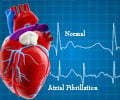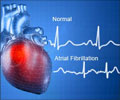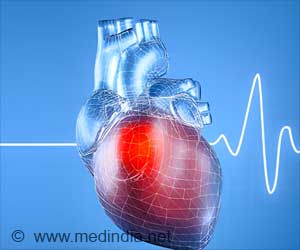Combining risk score tools helps to predict the risk of stroke in patients with atrial fibrillation.

- Atrial fibrillation or AFib is characterized by irregular heartbeat and is associated with an increased risk of stroke and heart failure.
- Patients with AFib are put on blood thinners, to prevent risk of stroke and death, but it can cause complications.
- Two scores, CHA2DS2-VASc and Intermountain Mortality Risk Score together, help to predict the need for blood thinners in such patients.
AFib affects around 2.7-6.1 million people in America. Approximately 2% of people younger than age 65 have AFib, while about 9% of people aged 65 years or older have AFib.
The tools used to predict the risk of stroke and death in atrial fibrillation patients:
- CHA2DS2-VASc
- Intermountain Mortality Risk Score
Blood thinners are used to prevent stroke in atrial fibrillation patients. But blood thinners like warfarin carry the risk of uncontrolled bleeding if not properly used.
"The CHA2DS2-VASc score isn’t terribly predictive of outcomes, but it’s easy to use and so it has served as a guideline to help calculate stroke risk for many years," said Benjamin Horne, PhD, lead author of the study and researcher at the Intermountain Medical Center Heart Institute. "But there are many variables not accounted for in the CHA2DS2-VASc score, so combining it with the Intermountain Mortality Risk Score provides a more complete predictive tool for physicians."
The Intermountain Mortality Risk Score uses lab values like a complete blood count and basic metabolic profile, collected from a patient. These values sync automatically to a patient’s electronic medical record so physicians have the score readily available.
The research team found that the Intermountain Mortality Risk Score offers a more accurate scale of low and high risk in patients with a CHA2DS2-VASc score of 2. This provides physicians with a better guide for determining if a blood thinner is right for their patient.
Results of the study will be presented during the American College of Cardiology’s 2017 Scientific Session in Washington D.C.
Reference
- Atrial Fibrillation Fact Sheet - (https://www.cdc.gov/dhdsp/data_statistics/fact_sheets/fs_atrial_fibrillation.htm)
Source-Medindia















